
Aaron Foyer
Vice President, Research and Analytics

Aaron Foyer
Vice President, Research and Analytics

Electricity generation across the US and Canada varies by region from differences in geography, available natural resources, and energy policies.
Solar power is dominant in regions with abundant sunlight, particularly the US Southwest. Alberta and Ontario have lower levels of available sunlight but benefit from supportive renewable energy policies.
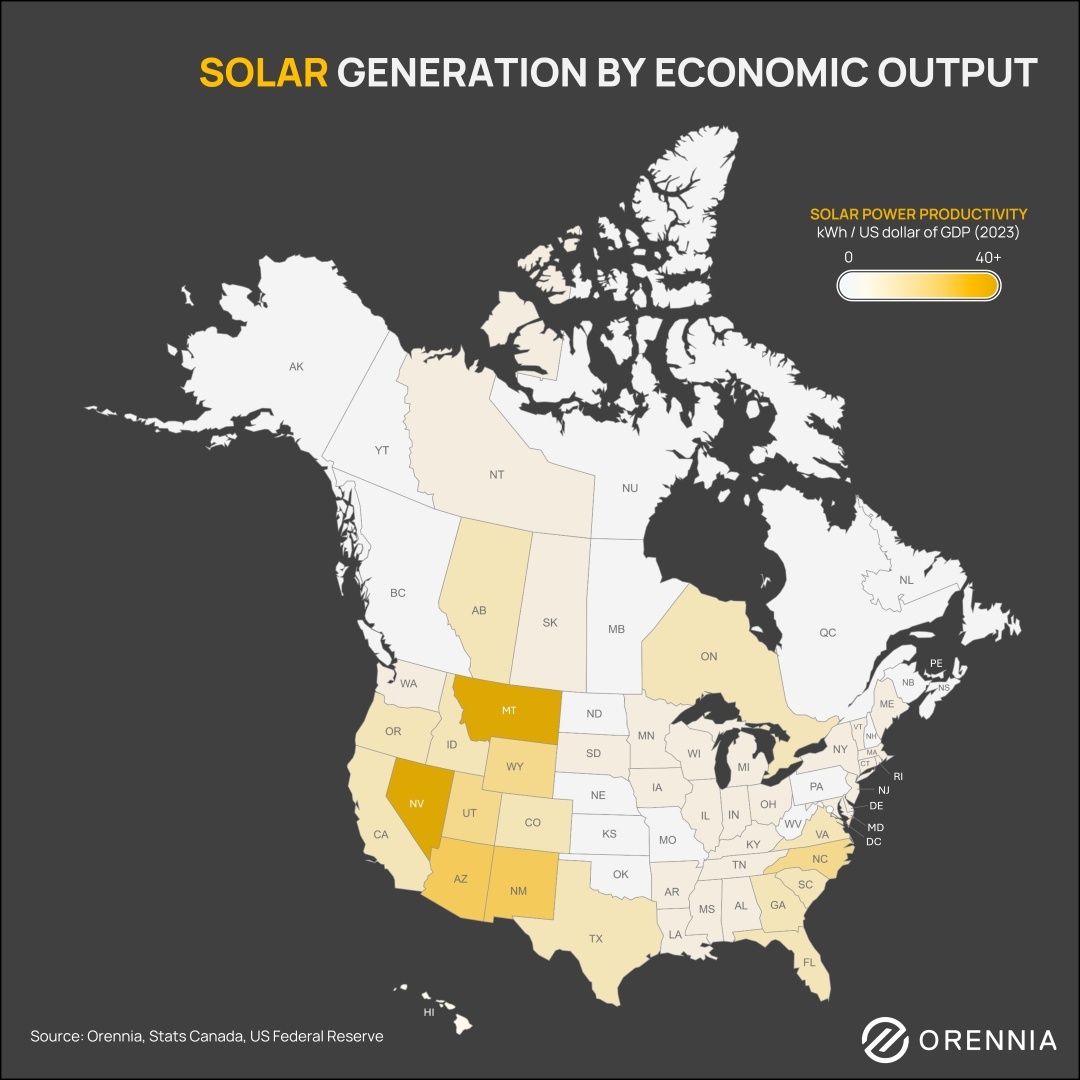
A North American wind corridor stretches from the Texas Panhandle up through the Great Plains into Canada, encompassing areas like Oklahoma, Kansas, and Alberta. All are known for their strong, consistent winds that make them ideal for wind power production.
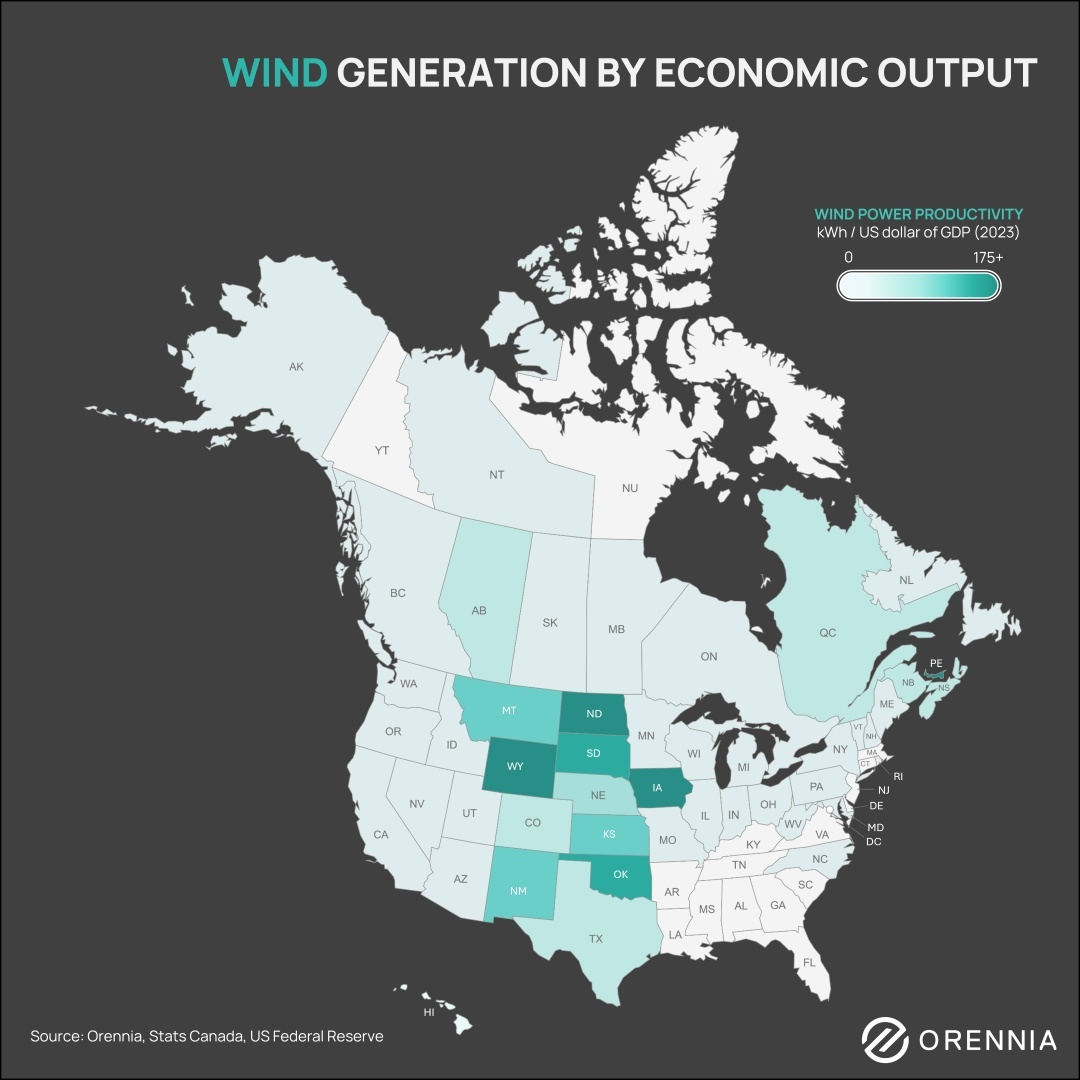
The Pacific Northwest in the US and many Canadian provinces get much of their electricity from hydro power. Quebec, Newfoundland and Manitoba are especially notable for relying almost entirely on hydro. Colder climates also help provide consistent water flow from snowmelt and glacial runoff.
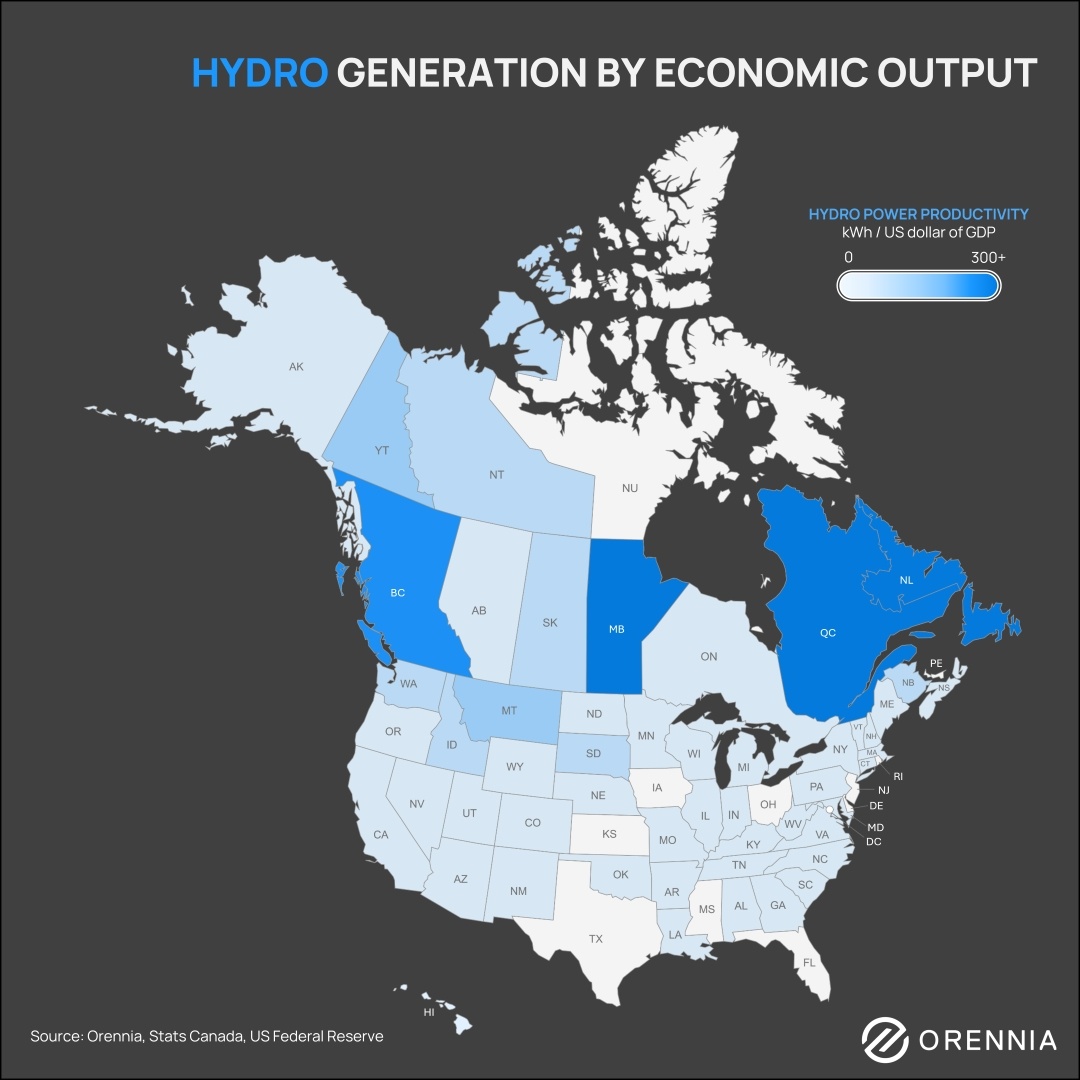
Nuclear reactors are concentrated in a few key regions, favoring established infrastructure and access to cooling water, like the shores of the Great Lakes.
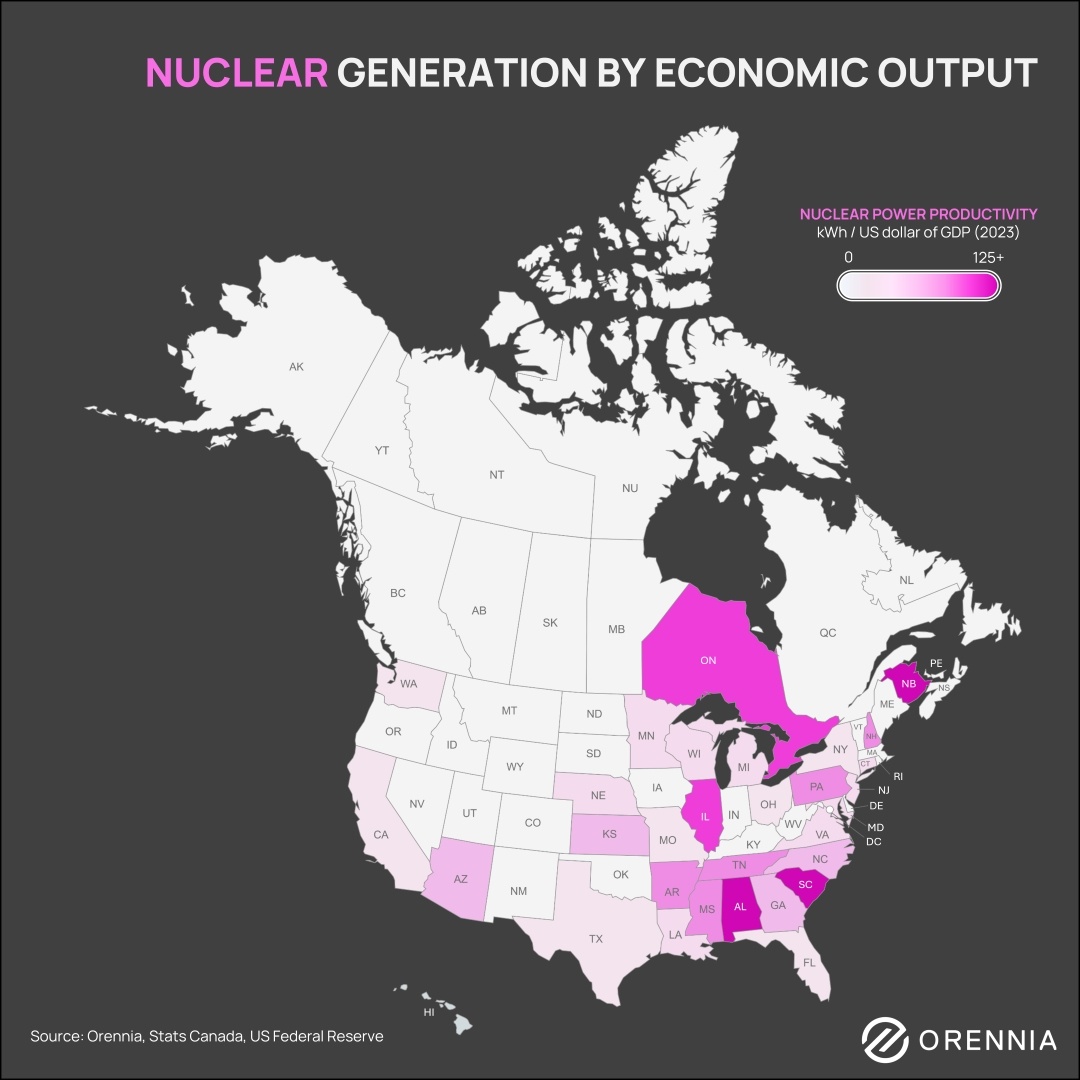
Coal and natural gas are both still dominant fuels used for power generation in states and provinces with active gas or coal production and infrastructure. These regions often lack the heightened potential for hydro and other renewables that other states and provinces benefit from.
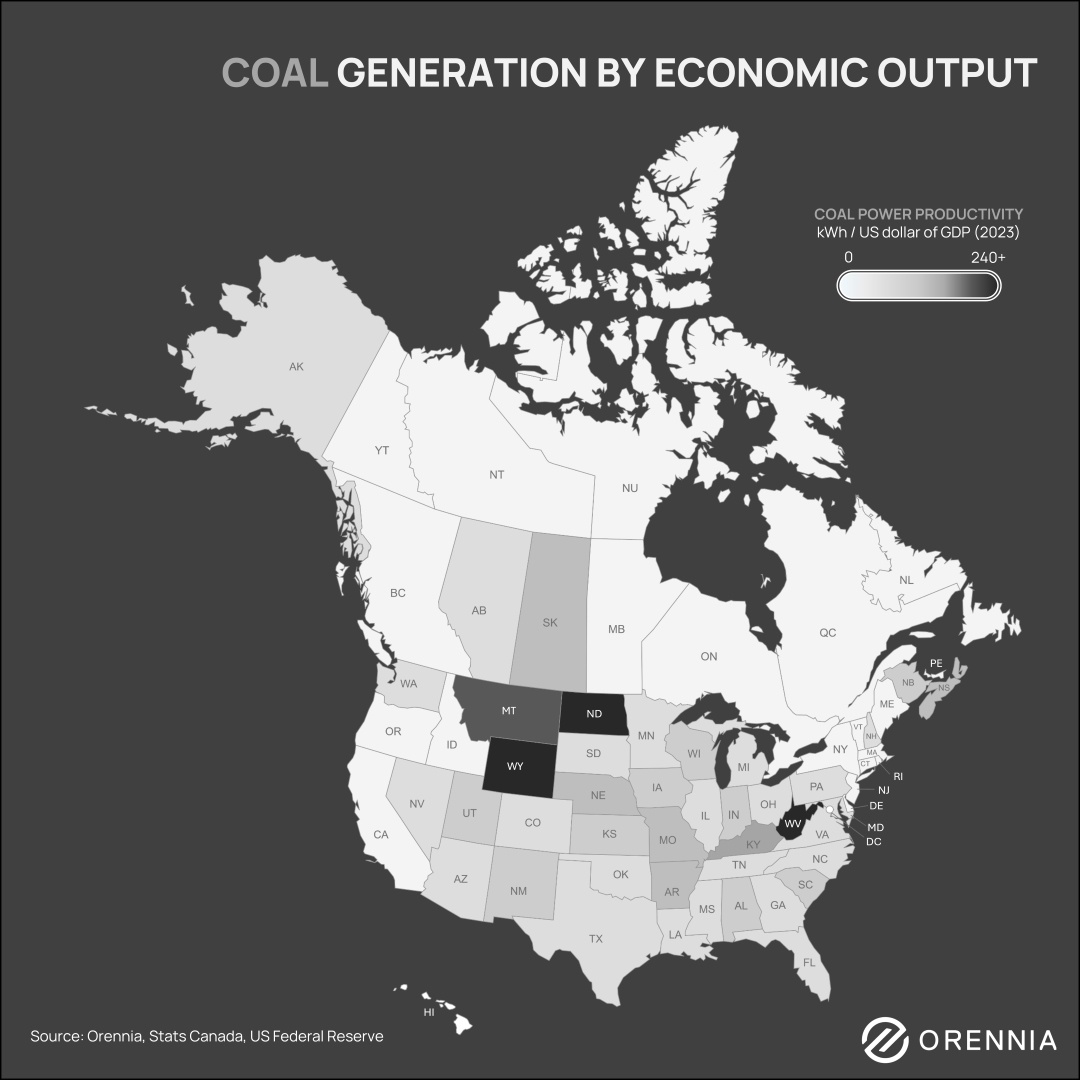
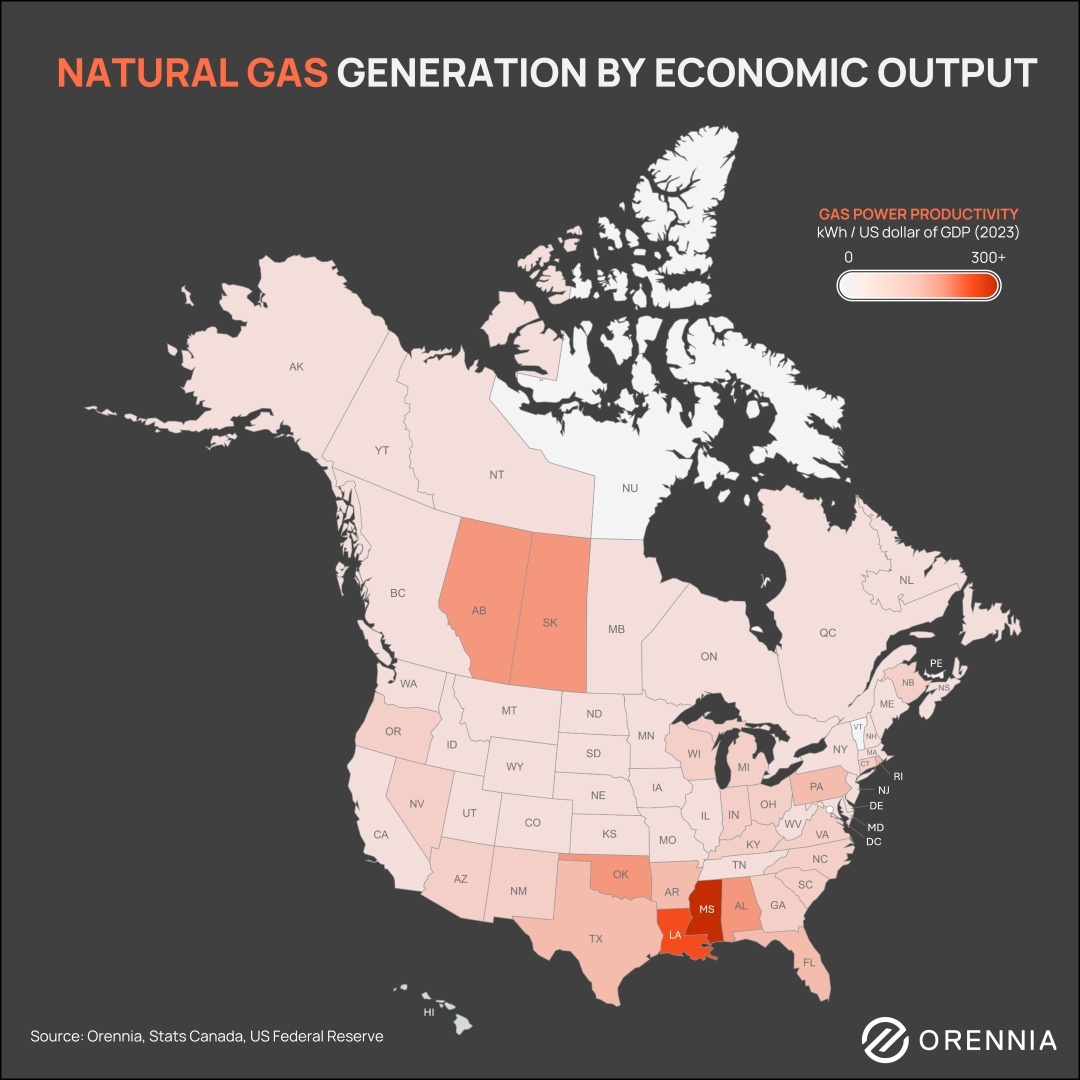
Power generation is rapidly changing across North America, with an active effort to move off coal power and adopt cleaner sources of electricity. Jobs, infrastructure limitations and policies will all shape how and where electricity is generated in the future.
Data-driven insights delivered to your inbox.